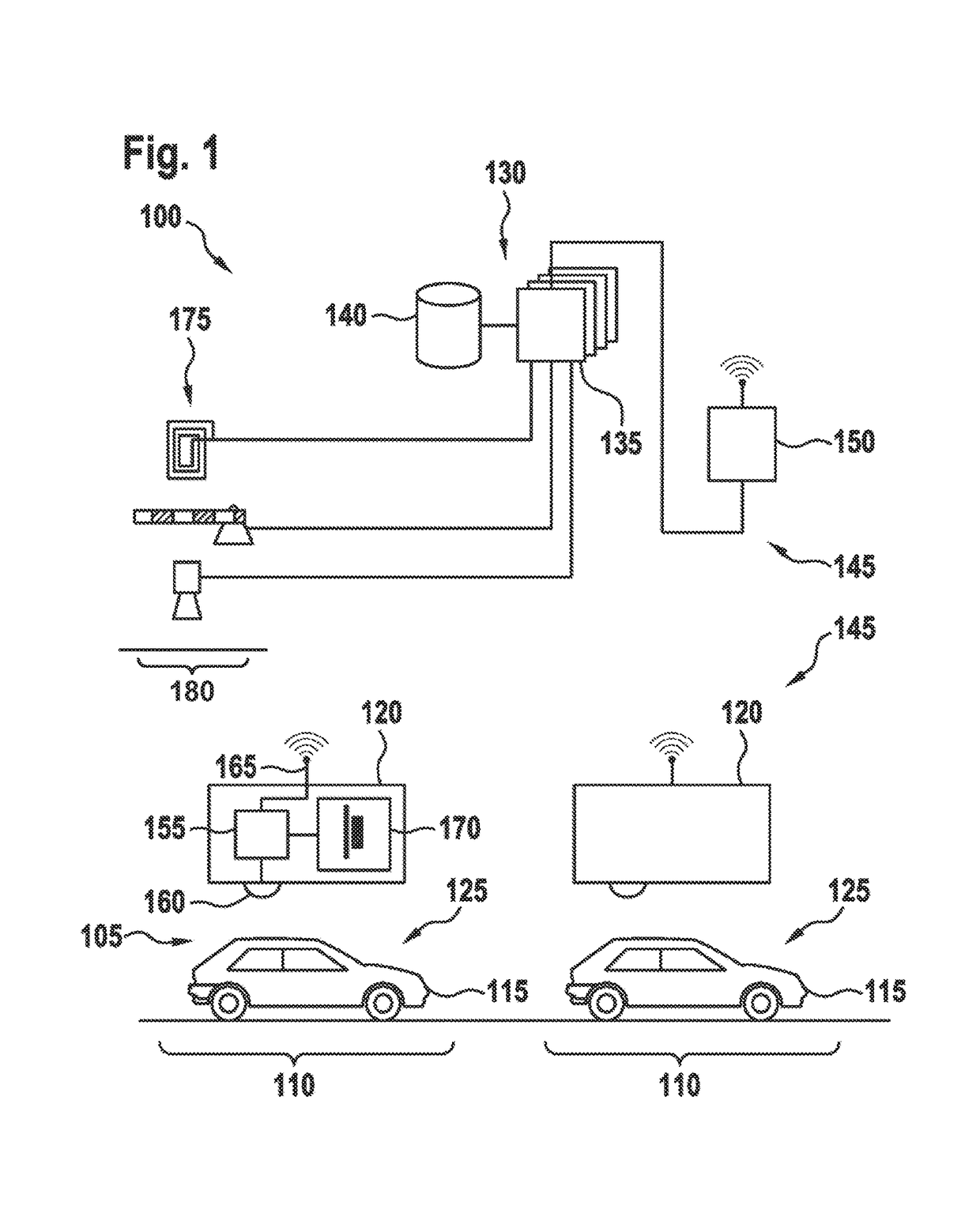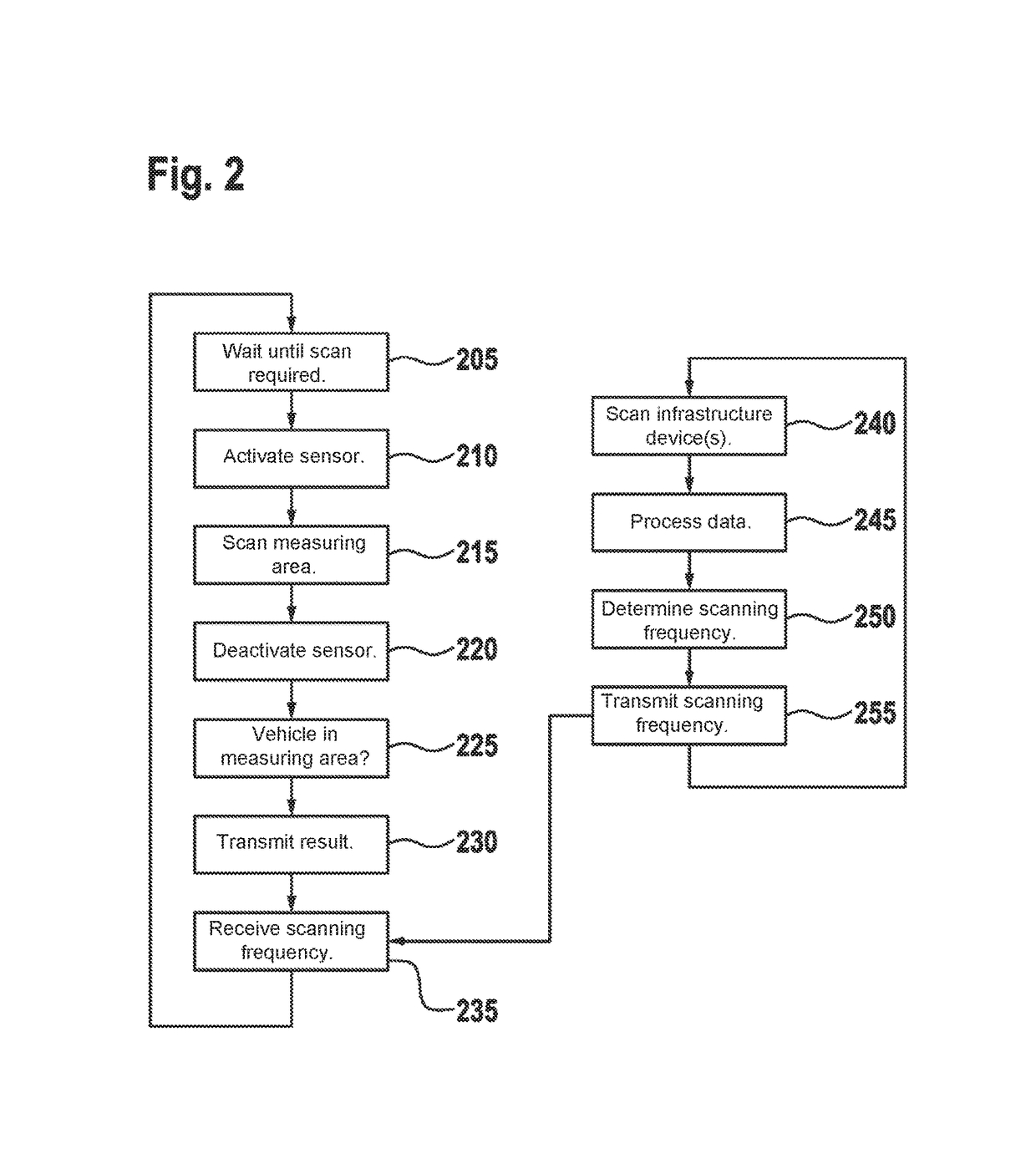Controlling a parking lot sensor
a parking lot sensor and sensor control technology, applied in traffic control systems, transportation and packaging, instruments, etc., can solve the problems of increasing the response time the average power consumption the failure of the parking lot sensor, so as to reduce the environmental load, reduce the service and maintenance costs, and limit the effect of energy reserv
- Summary
- Abstract
- Description
- Claims
- Application Information
AI Technical Summary
Benefits of technology
Problems solved by technology
Method used
Image
Examples
Embodiment Construction
[0026]FIG. 1 shows a management system 100 for a parking lot 105 having multiple parking spaces 110, which are designed respectively for a vehicle 115, preferably a motor vehicle. At one or multiple parking spaces 110, respectively one parking lot sensor 120 having a measuring area 125 is provided, which scans at least a portion of the space in which vehicle 115 may be parked in parking space 110. In the illustrated specific embodiment, parking lot sensor 120 is disposed above parking space 110 or motor vehicle 115, while in other specific embodiments parking lot sensor 120 may also be at another location, for example below vehicle 115 or at half height.
[0027]In the illustrated specific embodiment, parking lot sensor 120 is disposed above parking space 110 or motor vehicle 115, while in other specific embodiments parking lot sensor 120 may also be at another location, for example below vehicle 115 of at half height.
[0028]In addition to parking lot sensors 120, management system 100 ...
PUM
 Login to View More
Login to View More Abstract
Description
Claims
Application Information
 Login to View More
Login to View More - R&D
- Intellectual Property
- Life Sciences
- Materials
- Tech Scout
- Unparalleled Data Quality
- Higher Quality Content
- 60% Fewer Hallucinations
Browse by: Latest US Patents, China's latest patents, Technical Efficacy Thesaurus, Application Domain, Technology Topic, Popular Technical Reports.
© 2025 PatSnap. All rights reserved.Legal|Privacy policy|Modern Slavery Act Transparency Statement|Sitemap|About US| Contact US: help@patsnap.com



